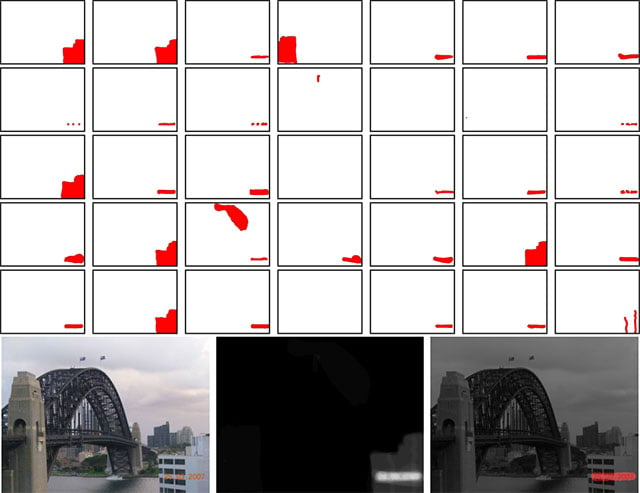Adobe is Working on Automatic Distraction Removal Technology
![]()
Adobe’s Content Aware Fill makes it easy to remove distracting elements in photos using Photoshop, but soon you may not have to. Computer vision scientists at Adobe and Princeton are working on a new technology called “distraction prediction” that can automatically find and remove distracting elements from photos.
Here’s how the study was done: the scientists first gathered together thousands of photos and asked people (through Amazon’s Mechanical Turk) to manually mark distracting regions in them. “Please mark the areas you might point out to a professional photo editor to remove or tone-down to improve the image,” the instructions read.

That set of annotated images was then used to train a computer to recognize areas of photos people might want to remove in random photos presented to it. Once the computer can automatically identify distractions in photos, the next step is simply having the area removed with content-aware fill.
Voila! Automatic distraction removal.

“We have a specific car detector in the code because people often want to eliminate cars that wander into the frame,” writes project scientist Ohad Fried. “We have a face detector. If the face is large and in the center of the photo, we probably don’t want to remove it. But if it is coming in from the side, it might be a photobomb.”
Here are a couple of before-and-after examples showing original photos and what they look like after their distractions were removed:
![]()
![]()
![]()
![]()
The scientists say that this project is a “first step towards semiautomatic distractor removal from images,” and that eventually this technology could be a quick and easy way for casual photographers to give their snapshots better compositions. Who knows… perhaps we’ll see an “Auto Cleanup” feature in a Photoshop CC update one day.
Image credits: Photos by Ohad Fried and Adam Finkelstein, Department of Computer Science, Princeton University; and Eli Shechtman and Dan Goldman, Adobe Research